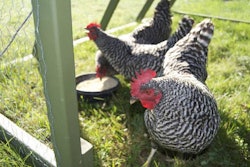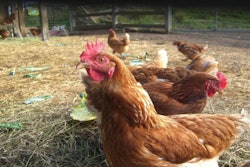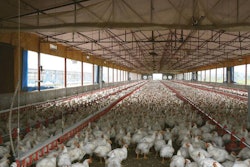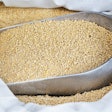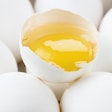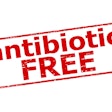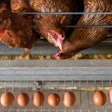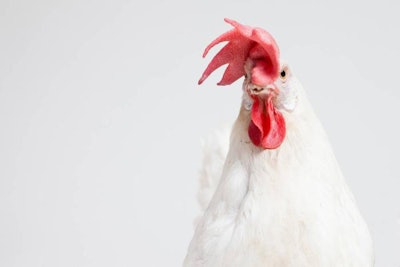
Past the initial laying period, hens are considered mature birds, at least in terms of digestive development. As such, and given the fact they are omnivore birds, they can consume almost all possible ingredients. In addition, all laying hens are limit fed to ensure they don’t get overweight. This means their daily feed intake is always below their potential maximal ingestion capacity. Or, in other words, there is room to increase feed intake if their feed is less nutrient dense — something that happens when non-traditional ingredients are used.
Then why are the majority of laying hens worldwide fed simple diets based on wheat or maize plus soybean meal? Simply because these ingredients enjoy two very important advantages: they are less expensive and more readily available than their alternatives. And when it comes to cereals such as maize and wheat, the alternatives are but a few; those that could replace soybean meal are numerous. Like soybeans, which are grown primarily for their oil, there are other oilseeds that can provide an equally interesting protein by-product. Examples abound and include such well-known ingredients as cottonseed meal and rapeseed meal, or very obscure ingredients such as wheat germ meal and palm kernel meal — it all depends on how far one lives from places producing such "exotic" plants.
But soybeans are not always cheap; or most likely, certain alternative protein sources become occasionally very attractive in terms of pricing or availability. Such was the case of a customer of mine who inquired about using a number of alternative protein sources. The price was right, the product looked good, the laying hen producers were interested, but how to use these unfamiliar ingredients?
The answer is to focus on four aspects.
1. Chemical analysis
A qualified nutritionist will require a detailed chemical analysis of the product in question. The nutrients to be examined are not always the same, and some may require further qualification. Nevertheless, the two most important nutrients are protein and fiber. To this, we must always strive to provide a detailed description of how the product is produced. Here’s an example: what I thought was a typical cottonseed meal product ended up being a cottonseed cake meal product. Very similar names, easily lost in translation, but meaning two different processing methods with two different by-products as the end result. So, make sure you know how the protein source is produced and described it in detail.
2. Anti-nutritional factors
Soybeans are a major offender when it comes to anti-nutritional factors. But we have learned to live with them, even neutralize most of them, and compensate for the rest. So, we consider soybean meal as the golden standard. When it comes to novel or alternative protein sources, however, we have a different array of anti-nutritional factors or very different levels of the same factors that we largely ignore in soybean meal. Using cottonseeds again as an example, may I mention here that inappropriate formulation with this ingredient may result in hens laying eggs with a greenish yolk? Very interesting from an academic point of view, but a very unpleasant surprise for someone trying to make an omelet.
3. Reformulation of existing diets
Most nutrition books will mention that such and such ingredient may be added at x or y percent in a given diet. This is, of course, an average figure that is intended as a general guideline for nutritionists. For example, let’s say cottonseed meal can be added up to 10 percent in a late-phase diet. Is it still the same if the same formula contains also rapeseed meal? Or, should we lower this 10 percent because rapeseed meal is also rich in anti-nutritional factors? And, of course, is it the zero- or double zero-rapeseed variety? This is why a nutritionist needs to reformulate the diets based on existing performance, available ingredients, and not the threshold of risk associated with the desired profitability from using such alternative ingredients. In other words, don’t try this at home!
4. Feed management
Once the diets have been reformulated, it is most likely that your nutritionist will recommend a different daily feed intake — if the energy level has changed. Or, you might need to adjust your feed dispensing system if the feed bulk volume has changed. Either way, an eye should be kept on hens, in terms of health and productivity, for the first week or so to ensure that they consume enough feed and nutrients to sustain productivity and they don’t suffer from exposure to anti-nutritional factors that have been underestimated. As it can by surmised by now, there are some very good reasons why we keep feeding hens on cereal and soybean meal diets — but lower cost is always a strong incentive to try something different.
In brief, alternative protein sources can be a valuable tool in lowering feed cost for laying hens. These birds will consume almost anything, but putting together a diet that will also enable them to maximize performance is something that requires information input and careful balancing of many factors. It can be done, and if done correctly it can be an attractive proposition, but if done haphazardly the outcome will be reduced layer performance, and this I can guarantee.

